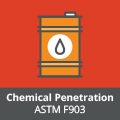HiVis Standards
HiVis Standards
For workers whose job requires them to work around vehicular traffic, being visible is critical; even more critical for those whose attention must be diverted away from the nearby traffic hazard. In fact, in a 2004 BLS report, of the 2,460 transportation related incidents resulting in fatalities, 15% were caused by a worker being struck by a moving vehicle. This statistic rose by a total of 11% from 2003 to 2004.
It is the intent of high visibility safety apparel to increase the wearer’s conspicuity to the operator of a motor vehicle thereby giving the operator ample time to make safe decisions enabling safe passage through a work zone.
There are different ways to increase a worker’s conspicuity. During the daytime, this is done using fluorescent background materials. This is the material that the high visibility safety apparel is constructed of. During the nighttime, this is accomplished through the use of retro-reflective trim. This is material that is applied to the background material that redirects or reflects light back to its source. Through the amount and placement of this trim, workers and their movements can be identified.
| Related Standards | |
|---|---|
| Standard | Name |
| ANSI/ISEA 107-2020 | American National Standard for High Visibility Safety Apparel and Headwear |
| CSA Z96 | High Visibility Safety Apparel |
| BS EN 471:2003 | High Visibility warning clothing for professional use. Test methods and requirements |
| AS/NZS 1906.4:1997 | Retroreflective Materials and Devices for Road Traffic Control Purposes Part 4: High Visibility Materials for Safety Garments |
| AS/NZS 4602:1999 | High Visibility Safety Garments |







